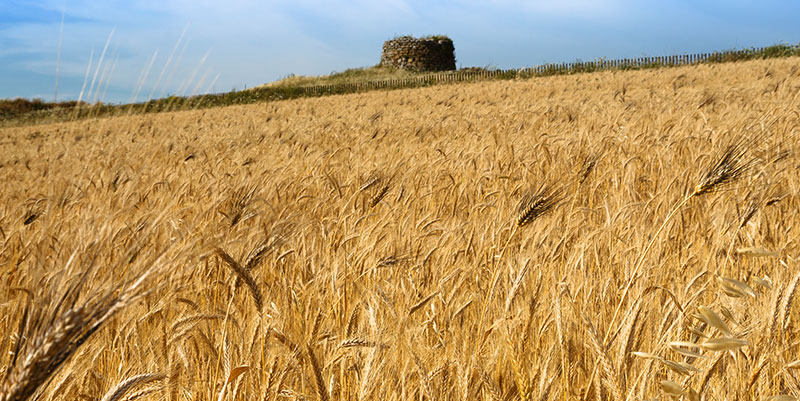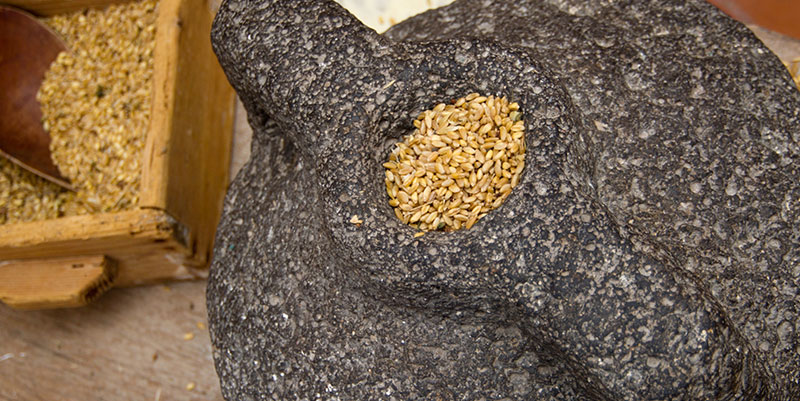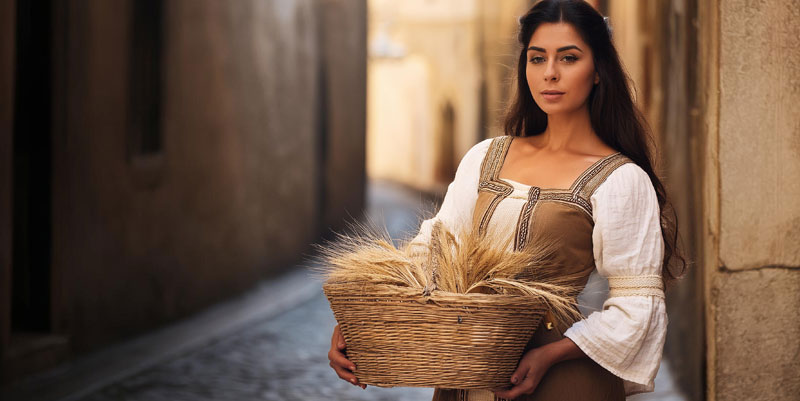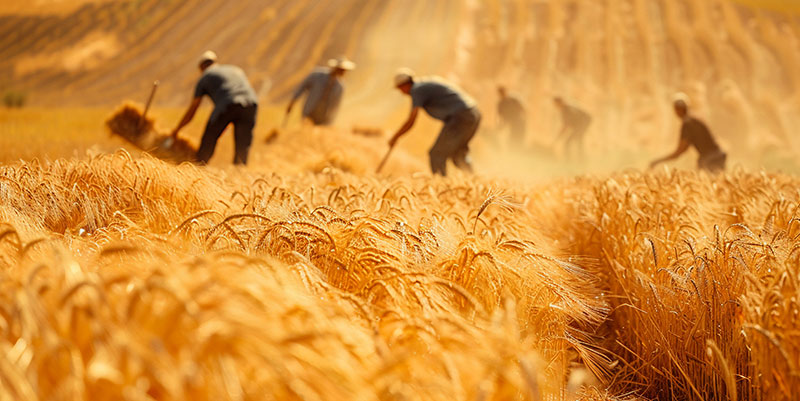The Sardinia, kissed by the sun and caressed by the wind, has always been a land devoted to agriculture. Here, among golden fields and intense aromas, the wheat ripens luxuriantly, giving us a semolina of unmistakable quality. Since the time of Rome, our island exported large quantities of wheat to the peninsula. The Brundu Brand, faithful to tradition, selects only the best semolina to create an artisan pasta, worked with care and passion. An authentic product, which enhances the unique flavor of Sardinia and pays homage to the artisan production.
History tells us that, thanks to its favorable climate, Sardinia became an important center for wheat cultivation, which was exported and renowned throughout the ancient world. In fact, as early as 300 BC, the Greek philosopher Aristotle wrote about the export of Sardinian wheat and sardines.
In the Neolithic period: The earliest evidence of cereal processing (emmer and spelt) in Sardinia dates back to the Neolithic, as demonstrated by charred seeds found in several settlements
Nuragic Era: However, wheat was not native to the island: it was introduced through the numerous trade exchanges that the ancient Nuragic populations had with other civilizations of the Near East and Greece. Archaeological findings confirm with certainty that wheat played a central role in Nuragic society, to the point of being depicted in Sardinian bronzetti as a votive offering in the form of sacred bread.
Roman Era: It was during the Roman occupation, which began around 250 BC, that Sardinia, thanks to the increased wheat production and skilled processing techniques, earned the nickname “granary of Rome” for its ability to produce a vast quantity of this important cereal.
In the Middle Ages: During the Sardinian Middle Ages and the Age of the Judicates, wheat continued to be an export product, also thanks to important trade agreements with various European entities. Wheat production continued in the Middle Ages, though not uniformly. The Sardinian wheat was mainly durum wheat, and with it, bread and pasta were made—staple foods on the tables of Sardinians. The endless variety of bread and typical pasta shapes (malloreddus, fregula, gnocchi sardi, etc.) that still characterize Sardinian cuisine today testify to the importance of this food over the centuries, and it remains essential for the island.
The Meilogu, located in north-western Sardinia and considered a sub-region of Logudoro, takes its name from its role as a “middle place” in the Giudicato di Torres. Characterized by historic hills and valleys, it has seen a continuous interweaving between its archaeological heritage and agricultural activity, especially in relation to the production of wheat.





The Sardinia, Blue Zone region, with its pure air and high quality food, can be defined as a symbol of longevity.
Here, the food is not only nourishment, but a real cultural heritage. The island’s culinary traditions, linked to land and sea, are a well-kept secret.
The Sardinian centenarians, with their simple and genuine recipes, have handed down an ancient knowledge that allows us to live longer and healthier. Sardinia is a significant example of how nutrition can affect the quality of life.